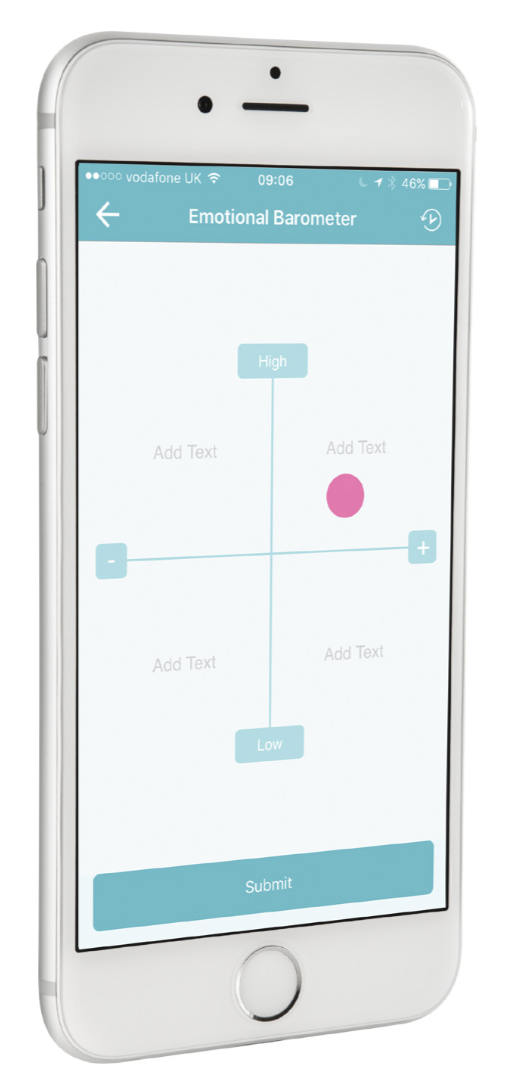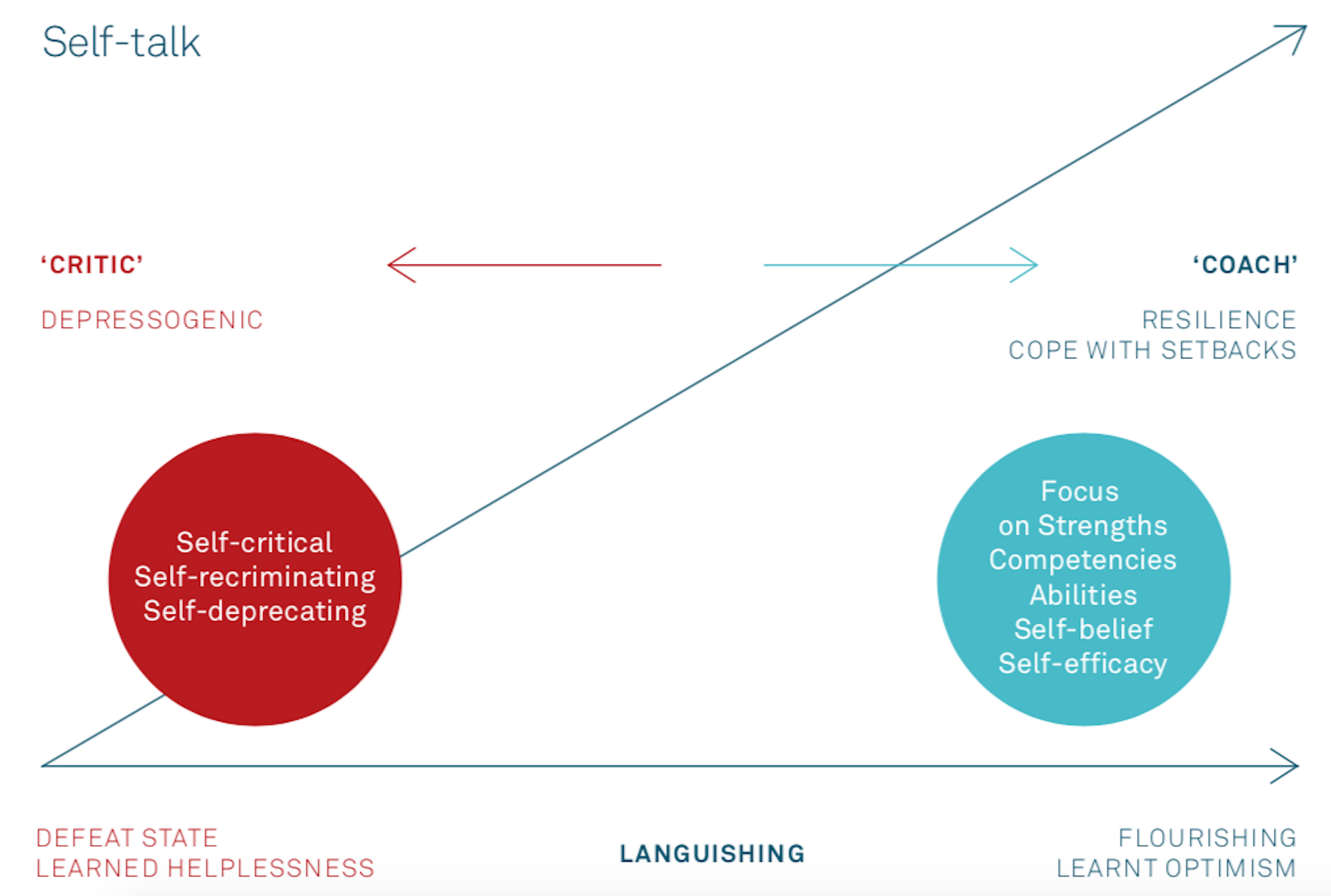In the days before our joint event with the Positive Group – the organisation responsible for our new emotional literacy toolkit – we found a rare fifteen-minute window in which the Headmaster (PH), Dr Squire (SS; Deputy Head, Students and Staff) and Mr Dawson (ND; Deputy Head, Junior School) were free for a chat. We used the time to talk about what exactly it is that Positive offers students and staff, what impact it has had so far and how it will optimise wellbeing in the future.
Q: Can you try and sum up what Positive is and what it offers to students?
ND: I think the people at Positive would describe their programme as one that teaches its users – both students and staff – to optimise psychological wellbeing. The programme itself has been developed from new research into how our brains work and how we respond to stimuli, and this in turn has been used to create a toolkit for those moments when we’re under pressure and want to get ourselves back to functioning optimally. The theory is that, by using tools such as the inner coach and the emotional barometer on a regular basis, users will become more resilient through the repeated reflection these tools incorporate.

The modern mind is constantly on.
SS: For me personally, the Positive programme can be summed up in two words: emotional literacy. That’s the process whereby we learn how to step back from a situation and reflect on our own emotional response, ask ourselves how it happened, how we’re feeling and how we can move on. The really lovely thing about the way Positive have done it is that their system is just as accessible Positive to a girl in Reception as it is to a Sixth Former, you just use it slightly differently. It’s great being able to show that to parents, and say to them, look, here’s what they do at aged four and here’s how it works aged eighteen.
Q: We have heard a lot recently in teaching about growth mindsets and the benefits of mindfulness, much of which is informed by cognitive behavioural therapy. Presumably Positive is offering something different to that, and I wonder if you could say what that is.
ND: Well, one thing Positive has which is different on the face of it is their App. But if you had Brian Marien in here, or any of the other representatives of Positive, they would all emphasise that it isn’t the case that you have to use the technology to get the main benefit of the programme. In my case, for example, I’ve cut right down my use of the emotional barometer (which is part of the app), but I’m still very much using it, if that makes sense, because I’ve internalised the process.
SS: I would agree with that. The app is very much a way in; it’s something that appeals to young people, and in that sense it’s very useful as a means of engaging with certain year groups on their territory, so to speak.
‘When Positive is fully rolled out, our Heads of Year will be able to start their assembly with, “Here’s last week, girls. I bet those top-rights were on this day and those bottom-lefts were on that day.” In that way, self-talk and recognition of its importance will become a fundamental aspect of our conversations about wellbeing and behaviour.’
Q: Does the app also help in terms of our insight into how the girls are faring?
SS: It does, yes. Using our admin privileges, we can draw down data from individual year groups, tutor groups and on a whole-school basis (although, crucially, each girl’s results always remain anonymous). At the end of last term, for example, I was able to look back at the Year Seven data for the summer term (2017-18) and, actually, their proportions matched perfectly the 30% on the left-hand side, 70% on the right-hand side ratio that shows a normal range of emotional responses. As a pastoral lead, that can be really useful data for us to keep an eye on. I also like the idea of integrating that data in our ongoing pastoral work with students. The hope is that, when it’s fully rolled out, our Heads of Year will be able to start their assembly with, ‘Here’s last week, girls. I bet those top-rights were on this day and those bottom-lefts were on that day.’ In that way, self-talk and recognition of its importance will become a fundamental aspect of our conversations about wellbeing and behaviour.

The Emotional Barometer
PH: And a big part of this programme seems to be about acknowledging that it’s not a problem to have negative emotions. It’s about acknowledging that we all have those moments for various reasons, but also that we can work our way through them, whether through talking to others or through our own response to it. Positive is a way of enabling students and teachers to engage in that process of moving more easily back towards the right side of the emotional barometer, and enabling your friends and peers and teachers to help you in doing that.
SS: I think that’s the big difference between the Positive approach versus some other organisations involved in mental health: it’s not taking a diagnostic approach. That doesn’t mean we should ever minimise something that is consistently a problem or is a maintained issue, but it’s tuning into this idea that, actually, life is not about being happy the whole time and, as a matter of fact, that’s normal and that’s resilience.
ND: Yes, that’s one area in which Positive is really strong, because it gives us the opportunity, when working with young people who are going through those moments of intense stress or anxiety, to let them normalise those emotions. When they say to us, you don’t understand, or when they aren’t even able to articulate their emotions because they’re too distressed to communicate, this tool gives us the opportunity to say, actually, it’s perfectly alright that you’re feeling this way, it’s a normal response.
SS: That’s right. The language used by Positive gives us a way into those conversations. I know, for example, that Heads of Year have found it very helpful as a starting-point, particularly with someone who finds it very difficult to articulate how she’s feeling, to start by asking, ‘So, which quadrant are you in right now?’ And she’ll say, ‘Bottom left.’ It gives us that short-hand we need for quickly identifying where someone is emotionally and the basis on which to have a conversation using that shared language, and that is just really helpful. It also explains why Positive are so determined that teachers should be the first ones trained; it’s the gas-mask analogy: teach us what to do so we can help others.
PH: And, of course, the technology helps us meet the girls where they are. In the Junior School, most girls won’t have a mobile phone, so we adapt it for their use. But in the Senior School, while we discourage the use of devices during the school day, we have to accept that they’re ubiquitous, and we may as well make use of the fact that these girls are digital natives for whom plotting their mood on the emotional barometer is just second nature. Also, am I right in thinking that the Positive app isn’t limited to the emotional barometer? It also provides other resources for the girls?
‘I think a school in which Positive is fully embedded will be one very like our own right now – only more so. More focused, happier, more present in the moment and ultimately more effective.’
SS: That’s right. And what’s really interesting is the way that different year groups have gravitated towards different aspects of the app. The Year Nine’s, for example, use the pinboard a lot. They really like pinning up images to show this is what I’m doing, this is what it looks like when I’m fun and happy, and they’re using it quite like Instagram. That’s particularly interesting because it gives them a means of reflecting on their emotions as opposed to projecting outwards a carefully curated public image of what happiness looks like.
PH: That’s great, isn’t it? Because the girls might well decide to post those images twenty-four hours later, but they’ve had time to process and reflect on their own moods in private.
SS: Exactly. It’s given them their filter back. So the app is teaching them they don’t have to hit send reflexively when they’re feeling vulnerable or low and are perhaps seeking attention for the wrong reasons. It’s reinforcing their safety mechanisms.
ND: We have to use it differently in the Junior School, of course. There we’ve got the emotional barometer in their planners, so it acts like traditional CBT with note-taking in real time, only in a much more accessible format that really appeals to the younger students.
Q: How do you think that students today benefit from changed attitudes to mental health in ways that we, as students of a different educational era, didn’t?
PH: Really, I think that it’s the next taboo for us to break down. We’re at a stage now where most students, especially our students, are generally very open and unafraid to discuss issues relating to sexuality, gender and race. Mental health is probably the next area where adults – and I think Princes William and Harry have led quite strongly here through their support of mental health charities – can intervene to make children and young people realise it is normal, it isn’t something to be ashamed of or to hide away, and we all face these challenges on a daily basis.
SS: And the great thing about Positive is that, with time, the students are learning how to engage in that process of self-talk all by themselves. I’m referring particularly here to the inner coach model that Positive encourage us to use, which creates a model for self-talk, a sort of inner dialogue that the girls are really picking up on. It’s very similar to the process I often use myself, when I try to encourage the girl’s to see a situation from someone else’s perspective, only iin this case the girls select a person whom they trust or whose opinion they respect, and with whom they can enter into a kind of imaginary dialogue that helps them to coach themselves through difficult situations. Eventually, of course, as with the emotional barometer, you can phase that method out because you’ve internalised the process.

Self-Talk – essential for emotional literacy
Q: How has the feedback been from the parents about Positive so far?
SS: It seems to be hitting the right balance. When we first introduced our policy on devices, which is quite controlled compared to some schools, we had feedback both ways from parents. But I think Positive has shifted the dynamic in an interesting way and we have had, if you’ll forgive the pun, very positive feedback.
Q: I suppose the last question, therefore, must be to ask how you see the Positive programme affecting the school in the future – how will Oxford High School look or feel different in two to three years’ time?
ND: My hope would be to see people using the Positive vocabulary as an organic part of their conversations about wellbeing. I’d also like to see special time allocated for these conversations, certainly in the Junior School, where access to the technological aspects of the programme is limited.
PH:In terms of visible impacts, I think we will be able to quantify it in terms of the extra energy and focus it will give the girls. I think a school in which Positive is fully embedded will be one very like our own right now – only more so. More focused, happier, more present in the moment and ultimately more effective.
Dr Brian Marien, founder of The Positive Group, and Dr Carole Edmonds, Managing Director of The Regard Group and a specialist in female attainment, will be the keynote speakers at our Positive Event on 11.10.2018, at which they will be joined by a panel of teachers and students discussing their experiences of Positive and led by Dr Squire as Chair.
Tickets are free, but the event is ticketed. Reserve your place here.